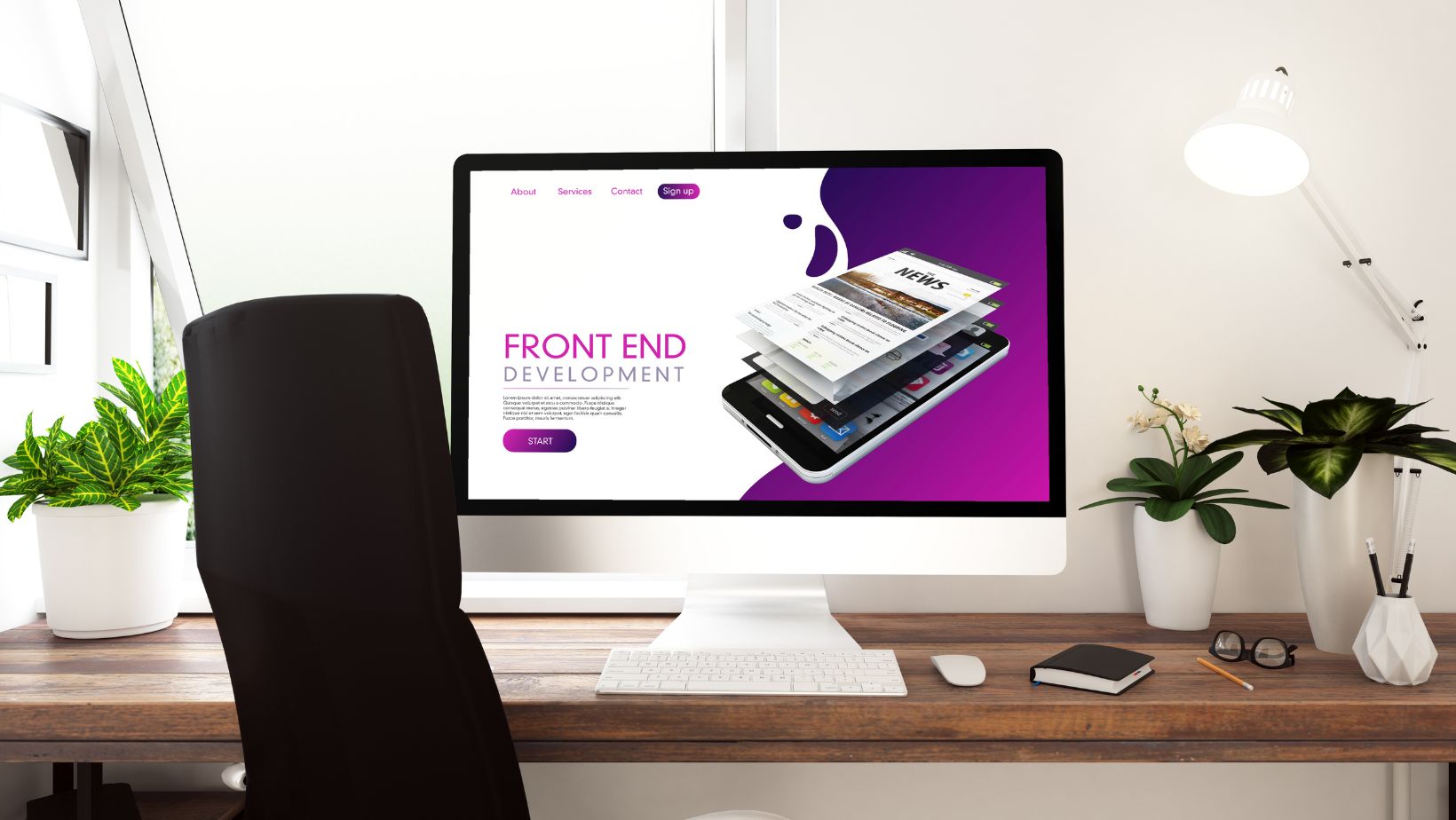In today’s fast-paced digital world, your website or application’s front-end is more than just a visual element—it’s the bridge between your users and the experience you want to offer. A well-designed front-end can make the difference between an engaged user and a frustrated one. Whether you’re building an e-commerce platform, a SaaS application, or a content-driven website, creating fast, responsive, and engaging front-end designs is essential for providing a seamless user experience.
As businesses move increasingly toward digital solutions, front-end development services have become a vital component in the development process. But what makes front-end designs stand out? What factors must be considered to ensure a polished, responsive, and engaging user interface (UI)? In this article, we will explore how to build an effective front-end, the importance of speed, responsiveness, and user engagement, and why partnering with front-end experts can help elevate your digital product.
Creating Seamless User Interfaces for Optimal Engagement
The first thing any user notices when interacting with a website or app is the user interface (UI). A well-constructed UI should not only be visually appealing but also intuitive, ensuring a smooth navigation experience. This seamless interaction encourages users to stay longer, explore more, and return in the future.
An essential aspect of a seamless UI is simplicity. Clear layout, consistent design elements, and easy-to-find navigation menus are vital components. Here are a few factors to focus on when designing a seamless UI:
- Minimalist Design: Too many elements can overwhelm the user. By focusing on a clean, uncluttered interface, you can create a sense of calm and clarity.
- Easy Navigation: Make sure users can easily find what they’re looking for, whether it’s a product page, a contact form, or an article.
- Visually Engaging Content: Whether it’s through images, videos, or typography, the design should engage the user and encourage them to interact with the content.
A seamless UI ultimately leads to a better user experience, and that’s where front-end development services come in. Skilled developers are able to translate visual design concepts into code that works flawlessly across devices and platforms.
Optimizing Performance for Speed and Efficiency
In a world where attention spans are getting shorter, speed is everything. No one wants to wait for a page to load or a button to respond. Optimizing your front-end design for speed is critical in providing an experience that satisfies your users’ need for instant gratification.
Several factors contribute to a fast-loading front-end:

- Efficient Code: Using clean, concise, and well-optimized code ensures that your site runs smoothly and loads faster.
- Image Optimization: Large, uncompressed images can drastically slow down a page. By optimizing images (through compression or using modern formats), you can drastically reduce load times without sacrificing quality.
- Minification of CSS and JavaScript: Reducing the size of your CSS and JavaScript files by removing unnecessary spaces and comments will help the website load faster.
A fast, responsive interface is not only crucial for user experience but also impacts search engine rankings. Google, for example, considers page speed as a ranking factor, making it even more important to prioritize performance when building your front-end.
Designing with Responsiveness: Ensuring Compatibility Across Devices
As mobile internet usage continues to rise, responsive design is no longer optional—it’s essential. Ensuring your website or app performs well across different devices and screen sizes is crucial for user satisfaction. A design that looks perfect on a desktop but breaks on a phone is a guaranteed way to lose visitors.
Responsive web design allows a website to adapt its layout and content to fit the screen size of any device, whether it’s a smartphone, tablet, or desktop computer. This flexibility ensures that the user experience remains consistent, no matter how your audience accesses the site.
Some critical aspects of responsive design include:
- Fluid Layouts: Using flexible grids and CSS media queries to adapt the layout based on the device’s screen size.
- Adaptive Images: Serving images that are appropriately sized for different devices to avoid unnecessary loading times.
- Mobile-Friendly Navigation: Optimizing navigation for smaller screens, often with features like collapsible menus or swipe gestures.
By investing in responsive design, you’re ensuring that your digital product will work seamlessly across a variety of devices, improving user engagement and retention.
Prioritizing User Experience with Clean, Modern Designs
User experience (UX) is the cornerstone of any successful digital product. An intuitive, easy-to-use interface is key to keeping visitors engaged and coming back for more. Modern design trends have shifted toward minimalism and user-centric design, focusing on providing the most relevant content in a clean, digestible format.
A good UX involves making users feel comfortable while they interact with your site or app. It’s about anticipating user needs and solving problems efficiently. Front-end development services can play a significant role in achieving this by ensuring that the interface is user-friendly and visually appealing.
Some key elements to consider in modern design include:
- Whitespace: Allowing enough space between elements to make content easier to read and navigate.
- Consistent Branding: Using a consistent color scheme, typography, and design language to create a cohesive feel throughout the site.
- Interactive Elements: Including buttons, hover effects, and animations that make the interface feel more dynamic and responsive.
Focusing on user experience with a clean and modern design ensures users will find your product easy to navigate, which can ultimately lead to increased conversions and higher customer satisfaction.
Leveraging the Latest Technologies for Cutting-Edge Front-End Solutions
The world of front-end development is constantly evolving, and keeping up with the latest technologies is key to delivering cutting-edge user experiences. From CSS frameworks to JavaScript libraries, using the right tools can make a significant difference in the performance and appearance of your product.

Some of the latest front-end technologies include:
- React: A popular JavaScript library for building user interfaces, known for its ability to create fast and responsive applications.
- Vue.js: A progressive framework for building UIs, often preferred for its simplicity and ease of integration.
- SASS/SCSS: These CSS preprocessor languages make writing CSS more efficient by allowing the use of variables, functions, and reusable code.
- Bootstrap: A front-end framework that speeds up the development process with its pre-built components and grid system.
By utilizing these technologies, you can create more interactive, dynamic, and efficient web experiences that are also scalable, saving both time and development costs.
Streamlining Development for Faster Time-to-Market
Speed is not only essential in terms of how quickly your website or app loads—it’s also about how quickly you can bring your product to market. In the competitive landscape of today’s tech industry, businesses must act fast to stay ahead. Streamlined front-end development can help you get your product out the door and into the hands of users faster.
Agile development methodologies, for example, allow for iterative, quick releases with continuous feedback loops. This approach ensures that each update is functional, tested, and improves upon the previous version, while still meeting user needs.
Working with front-end experts can also help speed up the development process. By collaborating with experienced developers, you can avoid common pitfalls, solve complex problems quickly, and ensure your project stays on track.
By incorporating agile practices and utilizing the right technologies, you can reduce development cycles and get your product into the market faster, allowing for quicker user feedback and continuous improvements.
In today’s digital landscape, having fast, responsive, and engaging front-end designs is more important than ever. Whether you’re developing a website, a web app, or a mobile application, partnering with experts who offer comprehensive front end development services is essential for success. These services not only ensure that your product is visually appealing but also provide the technical expertise needed to optimize performance, responsiveness, and user experience. By leveraging modern tools and technologies, focusing on user-centered design, and streamlining the development process, you can

